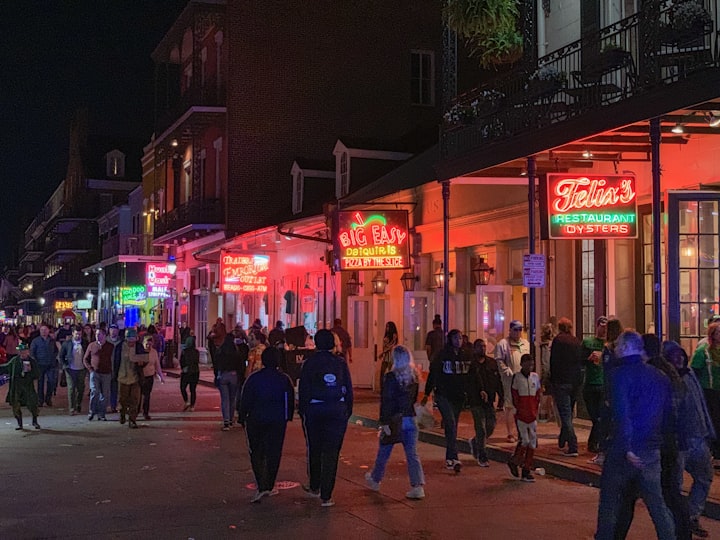On Writing Atmosphere and Archetypes - The Violet Project Diaries - Entry 16
A day-in-the-life diary series about the development of my writing career as a dark fantasy novelist.
Before my writing session, I had to watch a little Jenna Moreci, a bestselling author who gives wonderful, if not sarcastic, writing advice. My favorite quote from this video: “All fantasy should be based off of medieval Europe because it’s the law.”
Anyway, is writing the second draft supposed to almost feel like you’re writing another story? Well, it doesn’t feel that extreme to me, but there’s a lot that needs to be added, changed, and polished. I don’t know why this seems strange. During this writing session there are times I feel like my first draft is a botched mess and the fact that I’m having to fill in details that were obviously necessary must mean my writing needs a massive amount of improvement, but harsh inner critic aside, I’m fully aware that writing will always be a practice. The best I can do is remain teachable, open, and devoted to the craft.
So this is how my writing sessions went this week:
1. What was the hardest part/task?
I kept forgetting to give some physical description of a new character when they’re introduced, luckily my checklist helped remind me.
2. What was the easiest?
I wouldn’t say this was the easiest, but it’s getting easier to let my more poetic descriptions of characters and settings just flow. I’m learning to trust my writing style. Sometimes I think I’m too wordy and fear writing purple prose. I don’t want to look like I’m trying to hard or that I’m flowery on purpose. I just want to be me.
3. What do I think is my greatest strength?
Perhaps I should call my poetic narration style my greatest strength for this writing session. I really enjoy using sensory details and metaphors to introduce characters and portray their mannerisms.
4. What do I think is my greatest weakness?
Other than not trusting myself, I think a weakness I will work on is slowing down. I’ve mentioned before that my first draft is rushed, but the imagery in the setting can’t be rushed through in any fantasy novel, duh. I need to let the immersive elements sink in and give the audience time to take it all in .
5. How much of this writing session was an improvement from the first draft?
Like I said earlier, less rushing, more polishing, much more thoughtfulness regarding immersion.
6. How did you feel during your writing session today? Any challenges or triumphs?
I think what I’ve been describing in my previous answers is atmosphere. Just like music makes the mood for a social gathering, atmosphere and archetypes are key elements to the mood of any work of fiction. In art, mood and tone with colors range from cold to warms; I know in writing we have to explore all sorts of sensory details, so what I learned today, and also what I consider today’s triumph, is conveying a character’s demeanor with common attributes we associate with a Jungian archetype. I have a butler who is incredibly caring, but is also weighed down by his own melancholy because of events beyond his control; I have a mother who cloaks her ambition and need for validation by projecting herself as a taskmaster and demanding loyalty with her judgmental power. I also have a protagonist who fears their family and risks a permanent otherness for the sake of finding the truth. What learning how to portray those archetypes has taught me is to pair my characters with common motifs.

So my archetypes so far are butler-caregiver, mother-judge, and protagonist-rebel/seeker (and potentially an orphan). In one of my favorite books The Power of Archetypes by Marie D. Jones, the use of symbolism and archetypes is a commonly used narrative device helping the audience realize that, “even though we know…stories have a fictional foundation, a part of us senses the deeper truth buried within the tall tale,” (Jones 2017). The use of a motif, however, is a symbol already created and accepted into a culture and becomes, “embedded deep within the collective unconscious of humanity as a whole, but each culture may have their own spin on the details and specifics,” (Jones 2017). So, if I have a rebel protagonist, they may be torn between standing up for their truth and abandoning their caregiver, or perhaps there’s still a fear of consequences from the mother-judge. What does the rebel have to go through to represent their true archetype? We already know they’re going to have to break some rules and break some hearts. Writers know motifs shape their world and characters since the collective unconscious expects it. Keeping this in mind helps me relax with my writing style and trust my audience tap into their unconscious knowledge of motifs as they engage in the story.
I think the best part about this is that even though motifs can be so very cliche, they’re also the perfect hook.
Thanks for Reading
Contact:
My horror short "Autonomy Bleeds Black" is available at Kindle, Barnes and Noble, Smashwords, Scribd, and other ebook outlets.






Comments
There are no comments for this story
Be the first to respond and start the conversation.